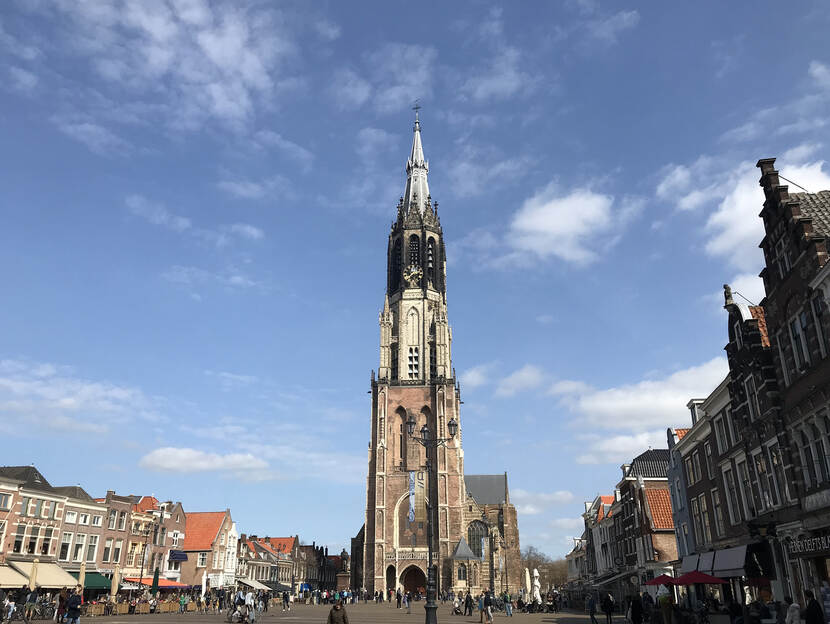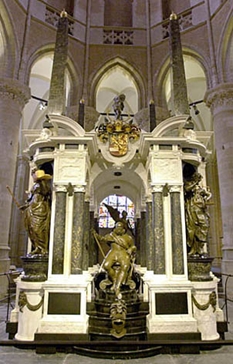Nieuwe Kerk, Delft
Nearly all the members of the House of Orange-Nassau have been interred in the Nieuwe Kerk in Delft.

The most prominent monument in the church is the tomb of William of Orange. The Nieuwe Kerk also contains the tomb of Hugo Grotius and numerous memorials to the members of the House of Orange-Nassau who lie in the vault.
Royal vault
Since the death of William of Orange, the last resting place of members of the House of Orange-Nassau has traditionally been the family vault in the Nieuwe Kerk in Delft. There are two sections. The older part lies beneath the tomb of William of Orange, in the choir of the church. The other section, behind the original vault, was first used in 1822.
The entrance to the vault, located at the front of the choir, is covered by a large gravestone on which are carved the arms of the House of Orange-Nassau and a Latin text: ‘Here lies William I, Father of the Fatherland, awaiting the Resurrection’.
The mayor of Delft is commissioner of the royal vault. He inspects it once a year and ensures that members of the royal family can visit it at any time. The vault is not open to the public.
Since the interment of William of Orange in 1584, almost all the members of the House of Orange-Nassau and their spouses have been laid to rest in the family vault in the Nieuwe Kerk in Delft. Two children of Princess Carolina of Orange-Nassau, who was married to the Prince of Nassau-Weilburg, are also buried there. The following were not interred in the vault:
- Philips Willem (1554-1619), the eldest son of William of Orange, who is buried in the church of St Sulpice in Diest (Belgium)
- Mary Stuart (1631-1660), wife of Prince William II, who is buried in Westminster Abbey in London
- Stadholder-King William III (1650-1702) and his wife Mary Stuart (1662-1695), King and Queen of England, Scotland and Ireland, who are buried in Westminster Abbey in London
- Henriëtte, Countess d'Oultremont de Wégimont (1792-1864). She married King Willem I after he abdicated and is buried in Wégimont in Belgium.
The Orange-Nassau princesses who married into other royal houses are not buried in Delft, with the exception of Princess Catharina Belgica and Princess Louise.

Mausoleum
The elaborate mausoleum in the Nieuwe Kerk was commissioned by the States General to commemorate Prince William of Orange, the ‘Father of the Fatherland’. It was built between 1614 and 1622. William was the founder of the House of Orange-Nassau and the first leader of the Dutch Revolt against the King of Spain. The Prince was assassinated in Delft on 10 July 1584. He was buried there because at that time the family vault of the House of Orange was in Breda, which was under Spanish occupation.
Design
The mausoleum was designed by Hendrick de Keyser, an internationally celebrated sculptor and architect in his day. It is constructed of three kinds of marble: black, Italian white from Carrara, and gold-veined black.